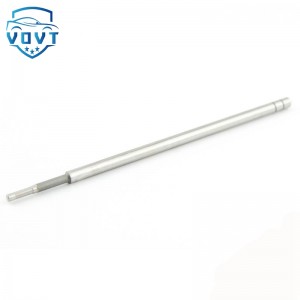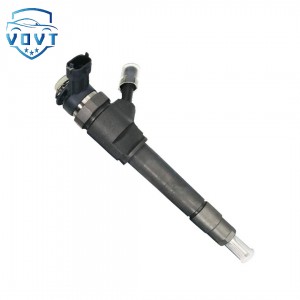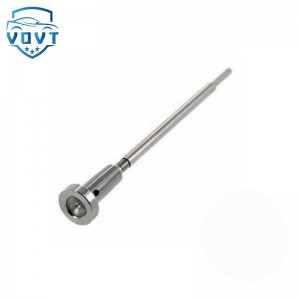High Quality Fuel Rail Pressure Sensors 499000-6160 Common Rail Pressure Sensor Spare part
Products Description
| Reference Codes | 499000-6160 |
| Application | / |
| MOQ | 6 PCS |
| Certification | ISO9001 |
| Place of Origin | China |
| Packaging | Neutral packing |
| Quality Control | 100% tested before shipment |
| Lead time | 7~15 working days |
| Payment | T/T, L/C, Paypal, Western Union, MoneyGram or as your requirement |
Design and Performance Analysis of High-Pressure Rail Pressure Sensors for Common Rail Diesel Injection Systems
Abstract
In modern diesel engines, the common rail system relies heavily on accurate fuel pressure detection to ensure precise injection timing, reduced emissions, and improved efficiency. The rail pressure sensor serves as a core component for monitoring and regulating fuel pressure in real time. This paper presents the design, simulation, and experimental analysis of a high-pressure rail pressure sensor capable of withstanding and measuring pressures up to 200 MPa. Through multiphysics modeling and optimization, the study aims to enhance measurement accuracy, thermal stability, and structural reliability under severe engine operating conditions.
1. Introduction
High-pressure common rail systems demand sensors with exceptional precision and durability to maintain optimal fuel delivery. Fluctuations in rail pressure can lead to inefficient combustion, increased soot formation, and unstable engine performance. Therefore, improving the design and accuracy of the rail pressure sensor has become a critical step toward achieving cleaner and more efficient diesel engines. Conventional piezoresistive sensors often experience signal drift, thermal nonlinearity, and fatigue-induced failure under continuous cyclic loading. This research addresses these issues through structural redesign and performance optimization using advanced simulation and testing methods.
2. Sensor Design and Modeling
The proposed rail pressure sensor adopts a piezoresistive principle, where pressure-induced strain in a stainless-steel diaphragm is converted into an electrical signal through a Wheatstone bridge circuit. The diaphragm geometry was optimized using finite element analysis (FEA) to achieve uniform stress distribution and reduce nonlinear deformation at peak pressures. A coupled mechanical–thermal–electrical simulation was conducted to evaluate the influence of temperature gradients and fuel pulsation on sensor output stability. The model incorporated realistic boundary conditions, including mounting stress and thermal conduction from the fuel rail body.
3. Structural Optimization and Thermal Compensation
To minimize measurement errors caused by thermal drift, the strain gauge layout was redesigned to achieve balanced temperature sensitivity. A novel diaphragm profile combining spherical curvature and variable thickness was introduced, which improved both linearity and fatigue resistance. Additionally, a digital compensation algorithm was developed to correct thermal-induced output deviations in real time. Simulation results demonstrated that the optimized structure reduced maximum stress concentration by 18% and improved signal linearity by 22% compared to conventional designs.
4. Experimental Validation
A prototype sensor was fabricated and tested on a high-pressure diesel rail bench. Static and dynamic calibration was performed under pressures ranging from 0 to 200 MPa and temperatures between −40°C and 150°C. The experimental data showed that the full-scale output error was less than ±0.25%, and long-term drift after 500 hours of operation remained below ±0.1%. The response time was measured at less than 1 ms, confirming suitability for fast transient pressure monitoring in high-speed injection systems. The results were in close agreement with the simulation predictions, validating the effectiveness of the design approach.
5. Conclusions
The research successfully demonstrates that structural optimization and thermal compensation significantly improve the performance and reliability of high-pressure rail pressure sensors for common rail diesel systems. By integrating multiphysics modeling, experimental verification, and advanced signal correction, the developed sensor achieves superior accuracy, stability, and durability under extreme engine conditions. Future work will focus on miniaturization through MEMS fabrication and the integration of intelligent diagnostic capabilities for predictive maintenance in next-generation injection systems.





















